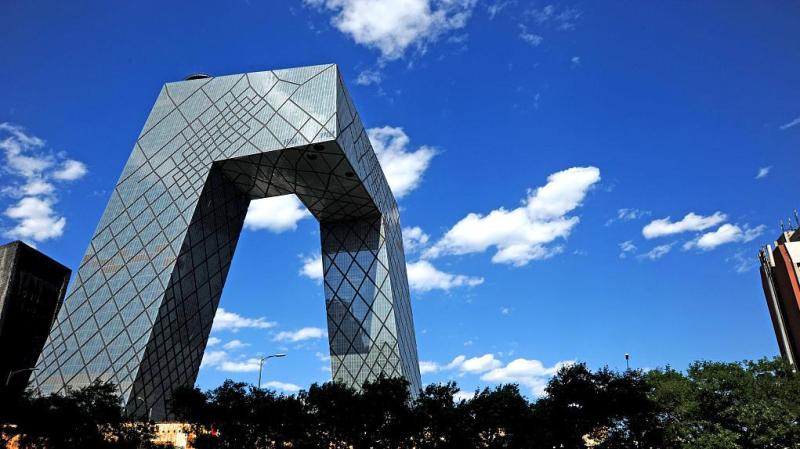China builds railways in the desert to challenge the world's problems! more than 70 years ago
In 1952, in order to connect Baotou and Lanzhou, two emerging industrial cities, China decided to build a railway connecting Baotou and Lanzhou, called the Baotou-Lanzhou Railway. The Bao-Lanzhou Railway not only plays the role of connecting North China and Northwest China, but is also the first railway passing through Ningxia.
With the approval of the Government Affairs Council, in 1952, the Ministry of Railways began the survey and design of the Bao-Lanzhou Railway.
However, after a survey, the railway builders discovered that if this railway was to be built, it could only pass through Shapotou, Zhongwei, Ningxia.
Shapotou, Zhongwei, Ningxia, is located on the southeastern edge of the Tengger Desert, the fourth largest desert in China. There are large areas of tall flowing sand dunes here, and the environment is extremely harsh due to frequent flying sand and rocks.
Although some countries in the world had built desert railways at that time, they only built the roadbed on flat areas outside the desert. Is there any hope of building a railway on shifting sand dunes?
The person responsible for the survey and line selection of the Shapotou section of the Baotou-Lanzhou Railway is Zhao Xingcun, a geological engineer from the Northwest Design Branch of the Design Bureau of the Ministry of Railways.
During a survey, Zhao Xingcun and his colleagues discovered a temple standing in the vast sea of sand.
As soon as I learned that this temple was built in the Qing Dynasty, it was more than 100 years old and was basically intact. This temple was located on the leeward side and was a great inspiration to technicians at the time. If that line is chosen at a suitable location and certain sand fixation and sand blocking measures are taken on the windward side, will the line be able to pass safely?
The ancient temple that Zhao Xingcun saw was called Chafang Temple. He thought that if the railway line in Shapotou was planned to be extended near the Chafang Temple, there should be hope of building a railway.
Therefore, after full investigation, repeated studies and discussions, he and his colleagues submitted a route selection plan for crossing the desert.
Building a railway in the desert is undoubtedly a bold move. However, the completion of the Baotou-Lanzhou Railway will not only quickly promote the industrial development of the northwest region, but also start the construction of desert railways in New China, which is of far-reaching significance! Therefore, after the Ministry of Railways organized expert appraisal, Railway Minister Teng Daiyuan approved the plan to cross the desert.
To make a design plan for the desert roadbed, a period of scientific research must be conducted first.
The next work for Zhao Xingcun and others is to settle down in Shapotou and conduct observations for a period of time to understand the movement patterns of quicksand.
At that time, Shapotou was an area that shocked the local people. There is a proverb circulating among the people, "When you go to Shapotou, no one will collect your bones. If you step on the Bianstone of the King of Hell, your life will be left to God."
It was in this harsh environment that Zhao Xingcun and his colleagues began meteorological observations such as wind direction and wind speed.
They have been squatting in that place for a long time to measure wind speed and rainfall. That is not just a day or two. The data that needs to be accumulated over a long period of time is accumulated through persistence every day.
After observation and analysis, they concluded that the settlement problem caused by building a roadbed on sand is not much different from that of ordinary soil. The most worrying thing is that the roadbed is easily damaged by wind and sand.
In order to speed up overcoming this worldwide problem, the Ministry of Railways sent Weng Yuanqing, a researcher from the Railway Science Research Institute, to Shapotou to take charge of the roadbed sand prevention design work.
Weng Yuanqing proposed to first design and build a 450-meter-long test roadbed in Shapotou, and made a detailed design plan for roadbed sand prevention: paving small grids with cobblestones to fix the slopes on both sides of the roadbed. . To prevent quicksand from accumulating on the tracks, they also designed platforms and sand-proof fences on both sides. Combine a variety of methods to prevent the roadbed from being eroded and buried by wind and sand.
In May 1955, after three months of hard work, the 450-meter-long test roadbed was successfully completed.
The completion of the test roadbed has initially proved that the mobile desert is not a restricted area for railway construction. This gave great encouragement to the railway builders and the people of Zhongwei.
What problems will they encounter when the railway is officially built? A protracted battle with quicksand has just begun...





